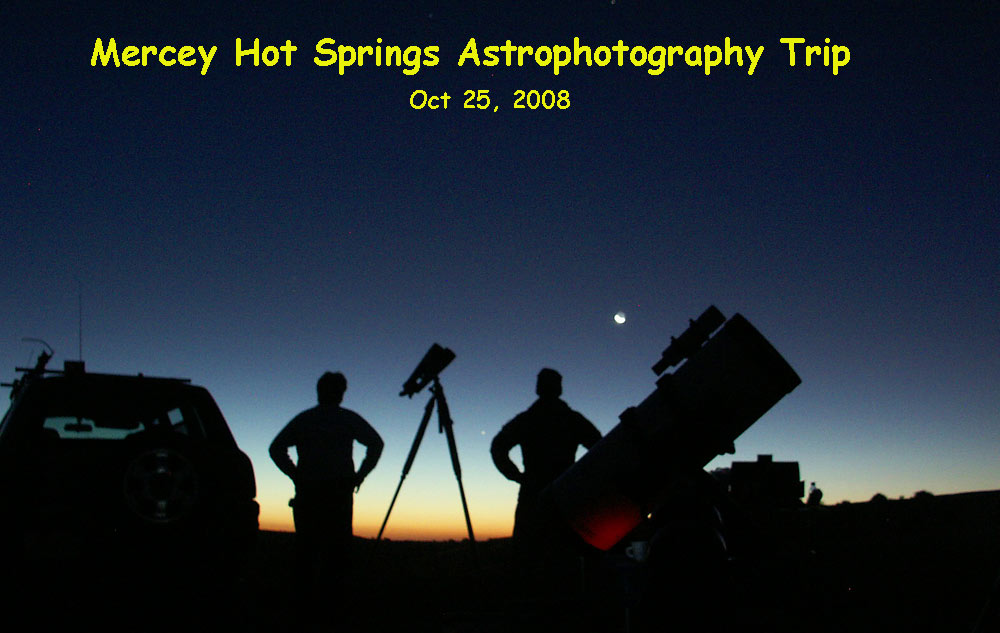

We had everything - perfect clear skies, dry clear air, no wind - and no students. This was a 2 1/2 hour drive, and it was an optional trip, and in the end - it was just me, Chris Angelos, and Chris Kitting - really, the instructor and already-expert astrophotography volunteers. Oh well, still made the best of a great night and got some nice images. I was up from dusk till dawn. Chris Angelos assisted till about midnight before getting some sleep until just before dawn began. For my images below, I used the 8" f/4 LXD75 scope. The night was very warm, and the chip temperature was -13C all night.
|
The Jellyfish Nebula in Gemini. 3x15min stack. The red giant Mu Geminorum is at bottom. All the usual tricks applied. |
|
I cooked up some eggs as we enjoyed first light on the Little Panoche Valley |
|
He tested out some new photo gear, and hoped to share some of his recent NASA mission adventures with my students. |
Ever the gear freak, Chris's camera collection has evolved to the point that this once-venerable Canon DSLR is now relegated to a new life - as a counterweight. |